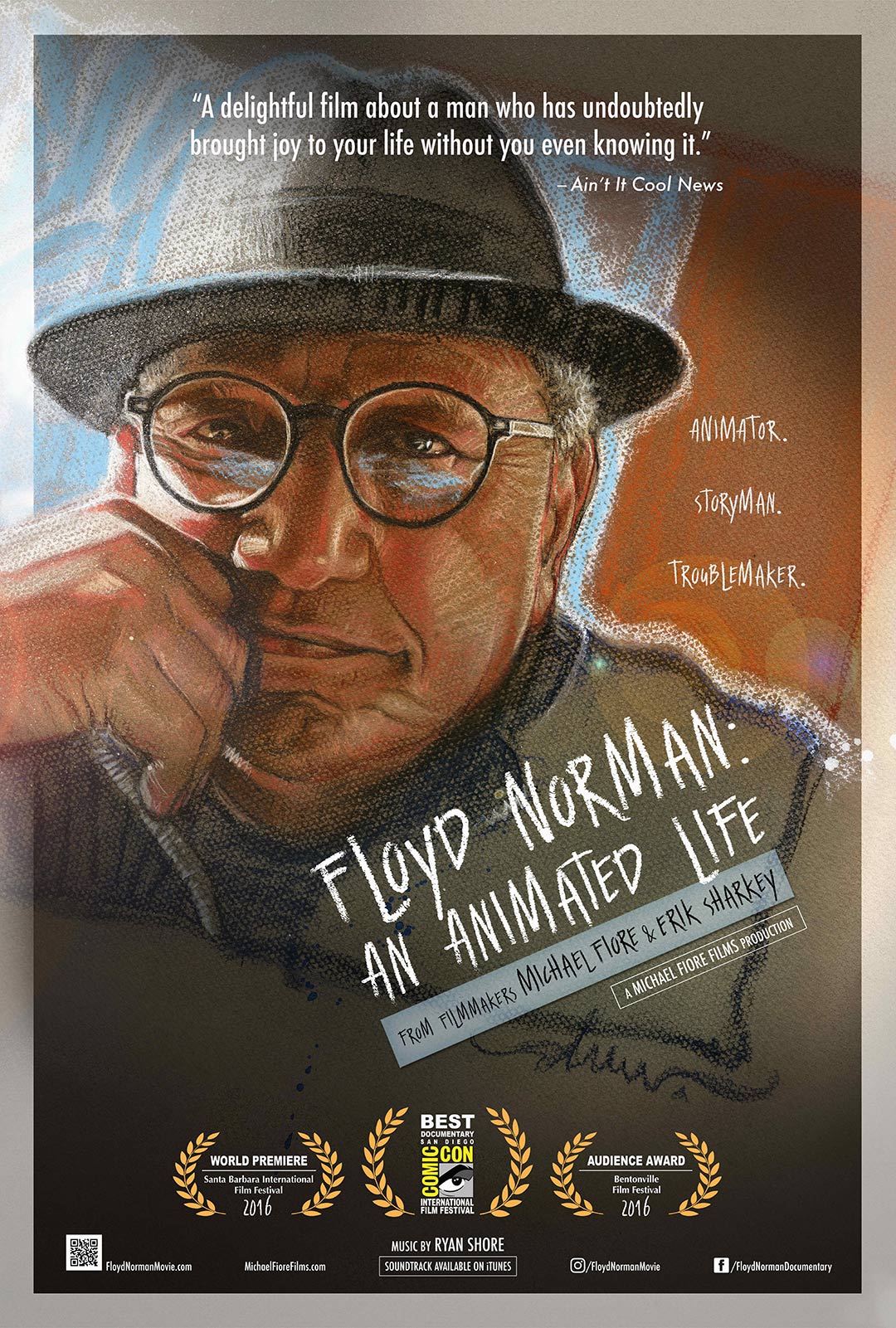Floyd Norman: An Animated Life
Posted on August 25, 2016 at 12:37 pm
B+| Lowest Recommended Age: | 4th - 6th Grades |
| MPAA Rating: | Not rated |
| Profanity: | A bleeped word |
| Alcohol/ Drugs: | Reference to alcohol |
| Violence/ Scariness: | Reference to divorce |
| Diversity Issues: | A theme of the movie |
| Date Released to Theaters: | August 26, 2016 |

Disney foolishly forced legendary animator Floyd Norman to retire at age 65, but he was not foolish enough to stop coming to work. Every day, he brings his wife Adrienne to her job at Disney, and then he spends the day wandering around, asking questions, talking to people, and generally, to use the portmanteau word Adrienne came up with, “floitering.” “The whole Disney campus is Floyd’s office,” says one colleague. Eventually, Disney realized they could not do without him and they gave up and just hired him again.
This delightful documentary about the very “animated life” of Floyd Norman is a must-see for fans of animation, movie history, and stories of lives filled with creativity, courage, and a sense of adventure. His career extends from the classic “nine old men” era at Disney, where he worked for Walt Disney himself animating the prince, the horse, and the three fairy godmothers in “Cinderella” and Kaa the snake in “The Jungle Book” and the “Jolly Holiday” musical number in “Mary Poppins” to animating, writing, and directing for Hanna-Barbera, Pixar, and for his own company. He used Roy Disney’s camera to go into Watts and shoot footage of the riots that was broadcast on the NBC news, and he worked on iconic Saturday morning cartoon shows like “Fat Albert and the Cosby Kids,” “Johnny Quest,” and “Scooby-Doo.” (The only negative comment the sunny-tempered Norman makes in the whole documentary is a good-natured aside on Scooby — “I hate that dog!”) He even animated the opening logo for “Soul Train.”

More characteristic is his description of his childhood in Santa Barbara as “incredibly pleasant.” It was there he saw his first Disney animated film — “Dumbo” and knew that making cartoons would be his life’s work. It didn’t matter that Disney had no black animators. He was “just another kid who wanted to work for Disney,” and when they saw what he could do, they hired him as an “assistant in-betweener” on “Sleeping Beauty,” where he was expected to turn out eight “dead-on precise” completed drawings a day.
One of the highlights of the film is seeing Floyd Norman at San Diego Comic-Con’s Quick Draw, with MAD Magazine artist Sergio Aragonés. But every moment is pure pleasure, as we see the man who is still “in touch with his inner 20-year-old” demonstrate the skill, imagination, and dedication that has been central to much of the most creative entertainment of the past 60 years.
Parents should know that this movie has a bleeped bad word, a sexual reference, and references to drinking and divorce.
Family discussion: Which is your favorite Floyd Norman animation and why? How did he show flexibility and “shape-shifting?”
If you like this, try: “Waking Sleeping Beauty,” “Walt and El Groupo,” and, of course, “The Jungle Book,” and Norman’s other animated classics

